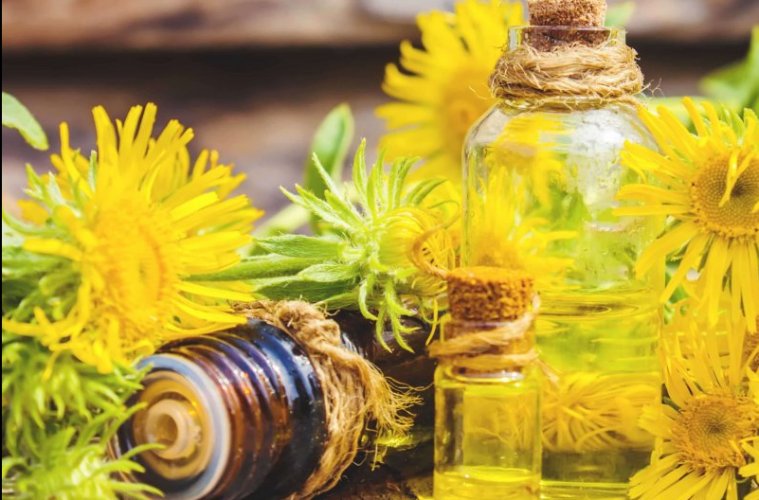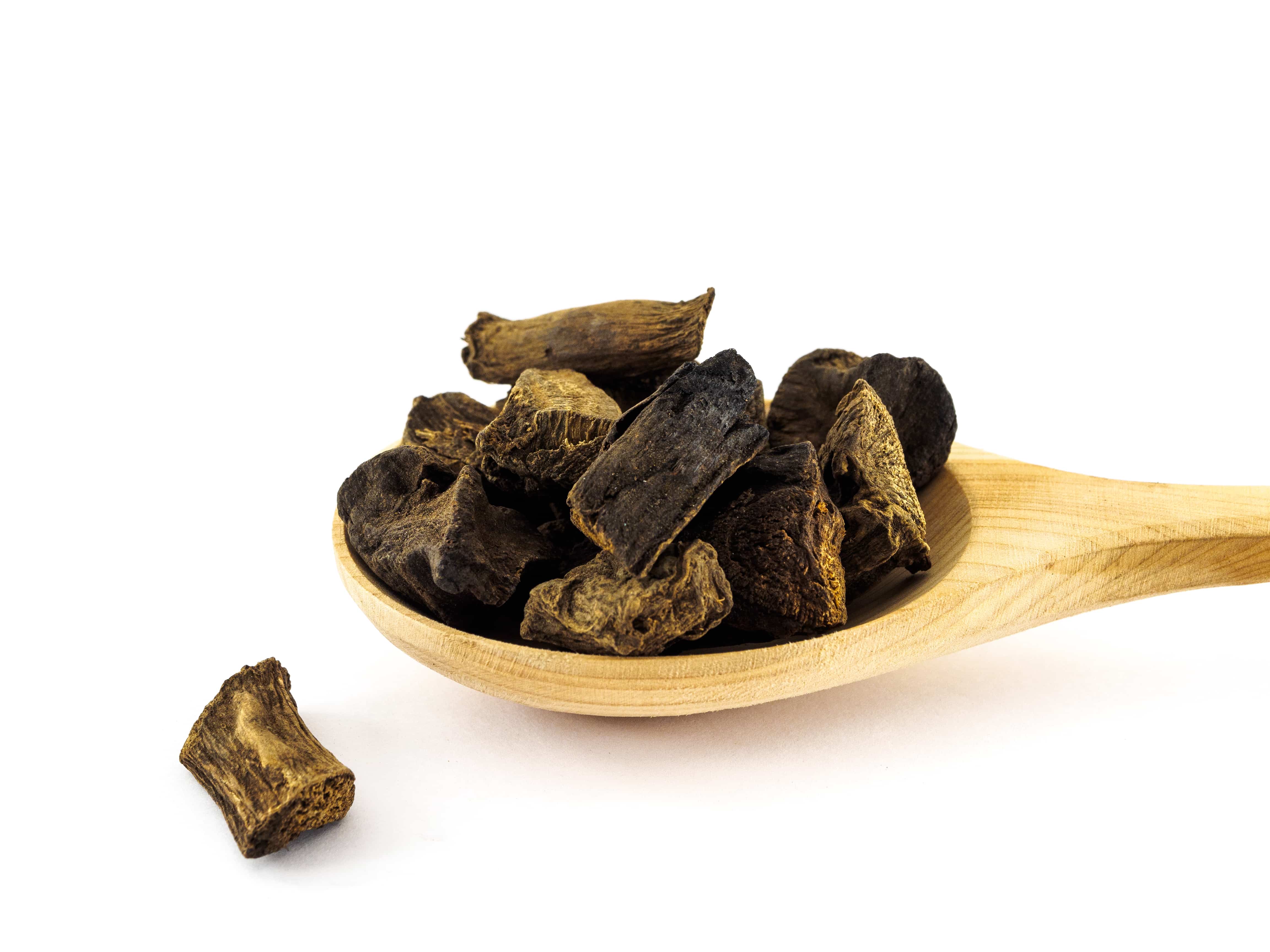Elecampane has several names such as horse-heal, marchalan, horse yellowhead, wild sunflower, scab wort, elf dock, velvet dock, alanroot.

Contents
Habitat
Elecampane is native to Eurasia from Spain to Xinjiang Province in western China and naturalized in North America. It grows well in moist, shady positions, ordinary garden soil. Though it flourishes best in good, loamy soil, the ground being damp but fairly well-drained.
Description
Elecampane is a rigid herb, the stem of which attains a height of about 90–150 cm. The leaves are large and toothed, the lower ones stalked, the rest embracing the stem; blades egg-shaped, elliptical, or lance-shaped, as big as 30 cm long and 12 cm wide.
Part Used
Plant Rhizomes and roots are used for medical purposes.
Traditional Uses and Benefits
- Elecampane has expectorant, antitussive, sedative, anthelmintic, diaphoretic, stomachic, antifungal, antiparasitic, relaxant, warming, tonic, alterative, diuretic, and antibacterial properties.
- Ancient Greeks and Romans considered the elecampane a useful herbal remedy for dropsy, digestive upsets, menstrual disorders, and sciatica. In the 19th century, elecampane roots were used to prepare cough drops, asthma tablets, and candy.
- This plant has been used as a veterinary medicine for skin diseases of sheep and horses.
- It is listed in the U.S. Pharmacopeia and has been long valued as a tonic herb for the respiratory system. It was used traditionally as a specific remedy for chronic bronchitis and asthma.
- Elecampane is believed to be useful in any respiratory condition which produces copious mucus discharge, and it is specifically indicated in the irritating cough of bronchitis, especially in children.
- Research has shown that the volatile oil of elecampane is active against the tubercle bacillus. The volatile oil stimulates the mucociliary escalator and circulation, while the saponins stimulate mucus removal from the lungs.
- The constituents alatolactone and other related compounds have expectorant, secretolytic and antitussive actions. These have also demonstrated antibacterial and antifungal qualities.
- It is a traditional remedy for worms; the constituent alantolactone has been used as an anthelmintic in the treatment of roundworm, threadworm, hookworm, and whipworm infestation.
- Chinese research has demonstrated that the elecampane has a mild antibacterial action and a stimulating effect on the nervous system, digestion, and adrenal cortex.

Dosage and Precautions
Dried root or rhizome 1 g by infusion or decoction three times daily.
Liquid extract 0.5–1.0 mL (1: 5 in 45% alcohol) three times daily, or 0.25–1.0mL (1: 1 in 45% alcohol) three times daily.
Tincture 2–5mL (1: 5 in 45% alcohol) three times daily, or 1–2 mL (1: 5 in 45% alcohol) three times daily.
Warning: Consuming large amounts can cause gastrointestinal discomfort, vomiting, diarrhea, cramps, and paralysis symptoms. It has the potential to interfere with the treatment of diabetes mellitus and high blood pressure. It is not recommended for pregnant or breastfeeding mothers.
DISCLAIMER
The content and information on newerapost for information and educational purposes only. It is not for self-diagnosis and self-treatment. The content is not a medical manual. Before beginning the use of any prescription, medication and pursuing any self-treatment, all readers should consult a physician.
The information given in this article is intended to help you make informed decisions for your health. You must consult with your doctor before pursuing any natural remedies if you are under care for any health condition.
Do not take any vitamins, minerals, herbs, or other supplements without consulting your doctor, if you are taking any medication. The website does not make a representation, express or implied, regarding the accuracy of the information and does not accept any single responsibility for any errors or misuse.


